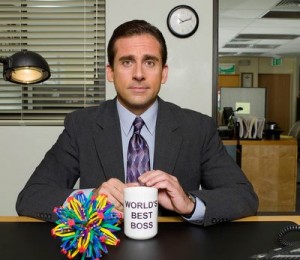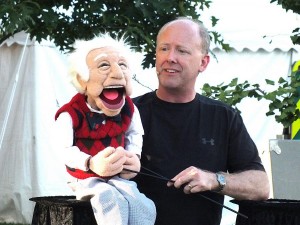How was your last company gathering?
I am always interested in what makes company gatherings winners and losers in the minds of the employees. Since I frequently entertain at these types of events, I am always seeking new ways that I can help make them winners.
During a conversation with a friend about his company’s recent summer picnic, my friend said something that I’ve witnessed, but had never quite put into words. “If the boss is a jerk, there’s not a whole lot anyone can do to turn the event around.”
Over the years, I’ve developed a radar for quickly determining jerk bosses at company events. There are signs. Here are some of them. (Note: I’ll use “he”, although it could just as easily be “she”.)
Jerk Boss Indicators:
1. The jerk boss ignores everyone but his inner circle during the event.
2. The jerk boss doesn’t even bother attending. It amazes me that a company would hold a once-a-year event with high expectations for attendance by the employees, yet the boss arrives late, leaves early, or is not there at all. This is even more baffling to me when it is a privately owned company. I’ve seen it more times than you’d think.
3. The jerk boss goes first in the food line, or, his table is served first.
4. The jerk boss refuses to participate in the entertainment because he might look bad.
5. The jerk boss wins the 50-50 drawing – and keeps it. (I wish I could say I’ve never seen this happen.)
Just as there are jerk indicators, there are also indicators of a boss who is respected and loved by his staff.
Non-Jerk Boss Indicators:
1. He mingles easily among the employees and they accept him eagerly into their conversations.
2. He arrives before the first guest and stays until the last guest has gone. More often than not, he is standing at the entrance greeting people with a hearty smile as they arrive. If he’s late or not there, everyone knows where he is and why he couldn’t be there. Sometimes personal issues do come up. The beloved boss demonstrates by example his own work/life balance.
3. He is just one of the guests when it comes to food serving order.
4. He eagerly participates in the entertainment, always first to laugh at himself. Occasionally he will defer this role to someone else because he knows that person would thoroughly enjoy the experience. It has nothing to do with protecting his image.
5. He laughs about his number being drawn for any type of prize and quickly calls for a new one to be selected.
Here’s another observation. Across the board, when I’m with a group that has a jerk boss, much of the talk is about how the business is struggling. The overall tone is very down. When it’s a non-jerk boss, the business is growing and thriving, or at least optimistically pushing through their current challenges. Which is cause and which is effect? You decide. I certainly have my opinion.
What are your top indicators of jerk and non-jerk boss? Drop me a line. I’d love to hear them.



